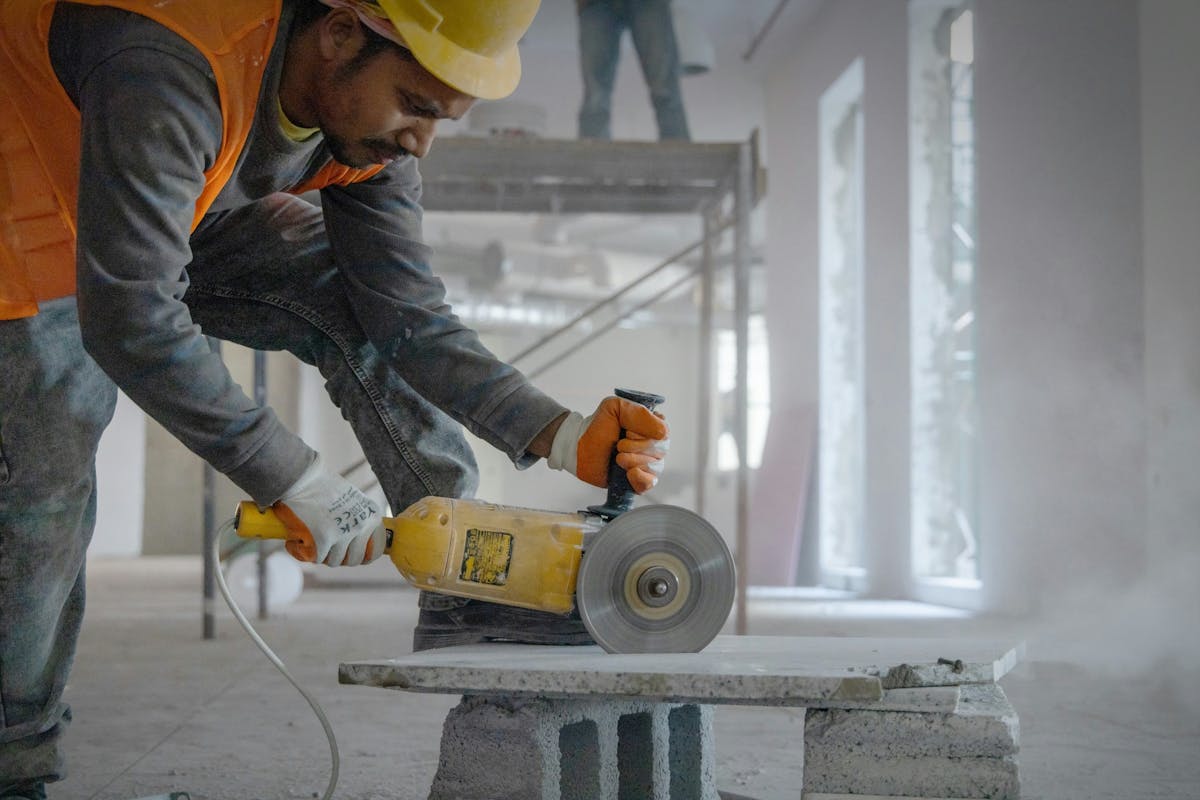Deskless Worker Communication: 8 Strategies for HR Success


Picture this: A maintenance worker finishes their shift at a manufacturing plant, only to discover the next morning that yesterday's safety briefing included critical updates they never received. Or a retail team member who missed the announcement about schedule changes because the message sat unread in their work email. For the 80% of the global workforce who don't work at desks, staying connected to their organization's communications can feel like an uphill battle.
Deskless workers — employees in manufacturing, construction, warehousing, agriculture, retail, and countless other hands-on industries — face a fundamental communication gap. Unlike their office-based counterparts, they spend their days actively working with tools, machinery, or customers rather than computers. Their shifts may start before dawn or extend late into the evening, and they often work in environments where checking email or logging into company portals simply isn't practical or possible.
The result is a communication divide that goes beyond inconvenience. When deskless workers can't access timely updates about safety protocols, schedule changes, or company news, it affects everything from workplace safety to employee engagement. For HR leaders, operations managers, and senior executives, closing this gap isn't just about operational efficiency—it's about ensuring every team member feels valued and informed, no matter where or when they work.
1. Implement a Mobile-First Communication Approach
Because deskless workers are often on the move, communication solutions must be accessible wherever they are. Implementing a mobile-first approach using SMS allows you to share updates in real time, ensuring that important information and schedules are always available.
With SMS communication, workers receive messages promptly without needing internet access or downloads. This method enhances immediate communication and helps increase engagement by keeping employees connected and informed. Unlike email, which only has a 20% read rate, text messages achieve a 98% read rate with an average response time of 90 seconds.
Consider how a construction company might send weather alerts directly to crews in the field, or how a logistics manager can instantly notify drivers about route changes. SMS ensures these critical updates reach workers immediately, regardless of their location or internet connectivity.
2. Adopt a Centralized Communication Platform for HR
A centralized communication platform brings all messages together, simplifying communication for everyone, especially the HR team. These platforms provide features like mass texting services, scheduling tools, file sharing, and feedback mechanisms, which help organize workflows and maintain transparency.
By centralizing communications, you can streamline processes, reduce miscommunication, and ensure every employee, regardless of their location, stays informed. This approach also encourages a sense of community by enabling recognition and feedback, contributing to a cohesive and motivated workforce.
For example, instead of juggling multiple communication channels, an HR manager at a manufacturing plant can send shift updates, safety reminders, and benefits information through one platform. This eliminates confusion from workers receiving messages through different channels and ensures consistent communication across all departments and locations.
3. Encourage Two-Way Communication for Frontline Feedback
Effective communication isn't just about sending updates. It's also about listening. Give deskless workers an easy way to respond, ask questions, and share feedback directly with HR or supervisors. This could be through simple SMS replies, digital suggestion boxes, or scheduled check-in surveys.
When employees feel heard, they're more likely to stay engaged, follow safety protocols, and contribute ideas for improvement. Two-way communication also helps HR teams spot issues early, such as training gaps or equipment problems, before they escalate.
A warehouse supervisor might use quick polls to gather feedback on new safety procedures, while a retail manager could send brief surveys about scheduling preferences. This real-time feedback helps management make informed decisions and shows employees their opinions matter.
4. Combine Technology with Human Connection
Digital tools are important, but don't discount the power of managers as communicators. Encourage line leaders or shift supervisors to act as messengers who can reinforce digital communications with face-to-face explanations. This hybrid approach ensures key messages are understood and gives workers a trusted person to follow up with.
For instance, after sending a text about new safety protocols, a floor supervisor can discuss the changes during the next team huddle. This combination helps ensure comprehension and provides an opportunity for workers to ask clarifying questions in person.
The human element becomes especially valuable when communicating complex policy changes or addressing sensitive topics. While SMS delivers the initial message efficiently, having a supervisor available for follow-up discussions builds trust and ensures understanding.
5. Use Low-Tech, High-Impact Communication Methods
Deskless workers are more likely to check their phones than log into systems requiring passwords or internet access. Keep messages short, direct, and relevant, and schedule them during working hours to respect personal boundaries.
Avoid requiring workers to download additional software or navigate complex interfaces. Text messaging works because it uses technology that's already familiar and accessible on every phone. Workers don't need training, passwords, or special equipment to receive and respond to important company communications.
Consider how an auto dealership service manager might send technicians their daily work assignments via text, including customer details and priority levels. This approach is faster and more reliable than expecting workers to check email or log into a company portal between appointments.
6. Build an Inclusive Digital Culture
Make it simple for employees to access critical information, such as training materials, policy changes, or shift details, without needing complex logins or passwords. Use scannable QR codes, personalized SMS links, and auto-translated messages to make content accessible to workers of all languages and technical abilities.
Many deskless workers speak different languages or have varying comfort levels with technology. Your communication strategy should accommodate these differences rather than create additional barriers. For example, a cleaning services company with a multilingual workforce can send safety updates that automatically translate into each worker's preferred language.
This inclusive approach ensures that important information reaches everyone, regardless of their technical skills or primary language. It also demonstrates that the company values all employees and wants them to succeed.
7. Establish Clear Communication Boundaries
Deskless workers often feel the pressure of blurred work-life boundaries. Avoid sending non-urgent communications after hours. Use scheduling tools that batch messages by shift or job role so workers only get the information that's relevant to them, at the right time.
Respecting personal time builds trust and prevents communication fatigue. Workers are more likely to pay attention to messages when they know they'll only receive relevant, timely information during appropriate hours.
A transportation company might schedule daily route assignments to arrive 30 minutes before each driver's shift starts, while reserving after-hours messaging only for true emergencies like severe weather alerts or safety incidents.
8. Create Role-Specific Communication Channels
Use one centralized platform that integrates task management, automated scheduling, and messaging while allowing for role-specific targeting. This helps eliminate confusion from juggling multiple message threads and allows HR and frontline managers to track delivery, responses, and follow-through in one place.
Different roles require different types of information. Maintenance staff need equipment updates and repair schedules, while customer service representatives need policy changes and customer feedback summaries. Tailoring messages to specific roles reduces information overload and improves relevance.
For example, a facilities management company can create separate communication channels for electricians, plumbers, and HVAC technicians, ensuring each group receives only the information pertinent to their work. This targeted approach increases engagement and reduces the likelihood of important messages being overlooked.
By adapting communication solutions to fit the specific realities of deskless work environments, you can improve engagement, productivity, and job satisfaction, leading to better overall performance and reduced turnover.
Revolutionize Your Deskless Workforce Communication
Using SMS communication keeps your deskless workers informed and engaged while addressing the unique challenges they face. SMS ensures your messages are seen and acted upon quickly. Unlike emails that might be overlooked or mobile apps that require downloads and internet access, SMS provides a direct way to reach your workforce instantly without requiring logins, passwords, or technical training.
This mobile-first approach respects workers' personal time by delivering relevant information without unnecessary disruptions, making it ideal for employees on the move across different locations and shifts. By addressing their specific communication challenges, you create an inclusive work environment where every employee feels informed and valued.
That's where Yourco can help. As an SMS-based employee app designed for the non-desk workforce, Yourco helps connect your company with your deskless employees. Our platform allows you to send updates, share important information, and receive feedback — all through text messages that your team can access anytime, anywhere. With no need for internet access or downloads, Yourco makes it easy for your workers to stay connected and helps you improve team alignment, boost engagement, and achieve better operational outcomes.
Ready to transform your deskless workforce communication? Try Yourco for free today or schedule a demo and see the difference the right workplace communication solution can make in your company.
Frequently Asked Questions
What are deskless workers?
Deskless workers, also known as frontline or non-desk employees, constitute 80% of the global workforce in sectors like manufacturing, hospitality, restaurants, retail, and healthcare. These workers typically operate on factory floors, in stores, at customer sites, or other locations away from desks. They rely on mobile devices or shared terminals for digital communication rather than having constant computer access. Examples include warehouse workers, restaurant staff, nurses, retail associates, construction workers, manufacturing workers, and delivery drivers.
What's the best way to communicate with deskless workers?
SMS-based communication is one of the most effective methods. It's fast, doesn't require internet access, and reaches workers directly, even those without company emails or apps.
Why are deskless workers often disengaged?
They're frequently left out of real-time updates and lack tools to participate in company culture. This disconnect leads to lower engagement, especially in high-turnover industries.
How does Yourco help improve communication?
Yourco sends company messages via SMS, ensuring that every employee, regardless of location or shift, receives important updates, schedules, and announcements in real time.
Can I send surveys or collect feedback through SMS?
Yes. Yourco offers built-in polls and surveys that allow Yourco admins and managers to collect employee feedback in real-time via text message.
Is SMS secure for workplace communication?
Yes. Yourco is SOC 2 Type II and GDPR compliant, ensuring enterprise-grade security. Our platform guarantees reliable message delivery and maintains a complete audit trail for record-keeping and compliance purposes.




